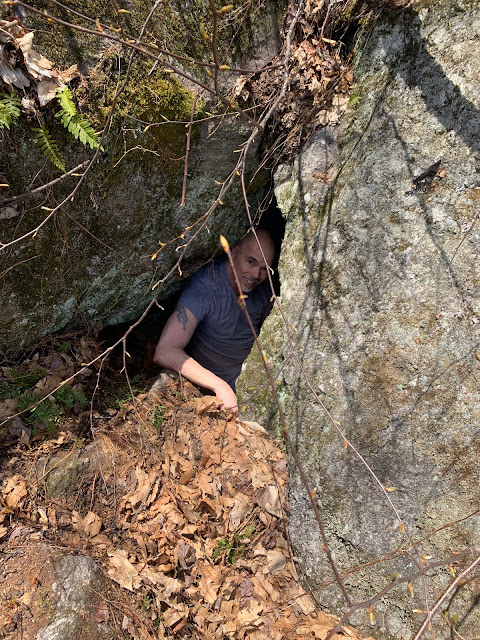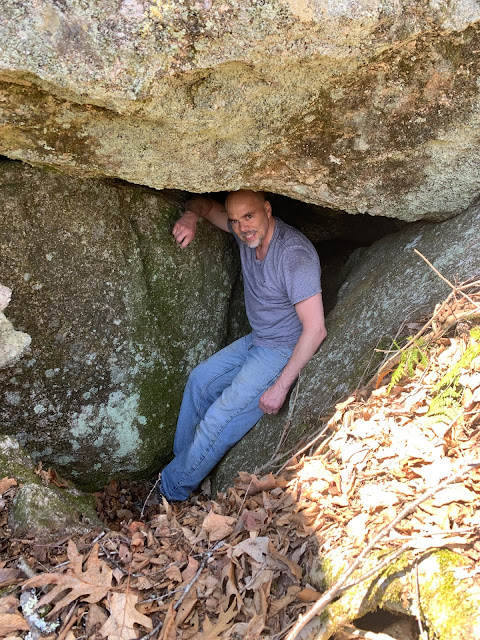Exploring the wondrous and sometimes hidden places of New Hampshire, and beyond.
Sunday, December 20, 2020
Saturday, December 5, 2020
Remains of the Homestead Nursing Home




Friday, October 23, 2020
EXPLORING The Kilton Mica Mine
Saturday, October 10, 2020
Video Exploration of the Campton Gold Mine
One of the better known mines of New Hampshire is the Campton Gold Mine. I took advantage of our recent dry spell to cross the river and show you this walkthrough of the tunnel. Although well known, I have not been able to find the history of this mine and welcome any info on it. Thanks!
Monday, September 28, 2020
Saturday, September 19, 2020
Glacial Potholes on Plummer's Ledge
There is a locality in town down the Buffalo Road less than half a mile from the Rumney line where the action of running water on solid rock can be studied to good advantage. Curiously enough, these potholes and caverns are on the top and sides of a high ledge with no water in sight.
- History of the Town of Wentworth, New Hampshire, George F. Plummer, 1930
This 3.5 acres of land was deeded to the state of New Hampshire in 1938 by George F. Plummer, the same man who wrote History of the Town of Wentworth, as quoted above. With Plummer's generous gift a state park was created where a half-dozen of these holes - and possible more that are buried and hidden - can be found along the ledge. Unfortunately - and head-scratchingly - the area has fallen into neglect and is no longer being maintained by the state, but it is still public land and therefore open to visitors.
Saturday, August 29, 2020
The Poor Farm of Nottingham, NH
The house would be overseen by a man who would "manage to best of his ability" the farm. "He shall have the power to cause all Paupers that may become inmates of the farm labour according to their best abilities, and shall punish these disobedient and obstinate Paupers who can, but refuse to do as they are directed.
- Monday April 9, 1838, Town of Nottingham Bylaws & Regulations
adopted in reference to the newly purchased Town Poor Farm.
Saturday, August 8, 2020
Piper Cherokee Wreckage on Saddleback Mountain
Friday, July 24, 2020
Rafting the Standard Mica Mine
 |
| Pegmatite Investigations 1942-1945 New England |
Saturday, June 27, 2020
Brookline's Outdoor Sculpture Park
Friday, June 12, 2020
The Raymond Cliff Caves, Weare NH
Friday, May 29, 2020
Pig Lane's Abandoned Community
This is where Pig Lane bisects the conservation property and where you'll start finding all the goodies shown at the kiosk. After seeing the mill - just a 220 foot walk down Mill Access Trail - our next detour was to the Foss Family Cemetery where we counted 13 fieldstone markers, none of which were engraved. Someone has figured out who is buried here though, for one stone was marked as a Civil War soldier, and another as a soldier from the Revolutionary War.
Perhaps the same person or group who marked these veteran's graves has also done a wonderful job piecing together other parts of Pig Lane's history. The next foundation we saw was the Swaine's house, where a sign shows you not only what that house looked like but tells the story of a flood that forced the family's evacuation out a second story window. Seems like there wouldn't be much left of the structure after that much water, but subsequent research told us the house actually survived this devastating flood and was lived in for many years afterward. Today, this is all that is left of it.
Links:
Connect with life in the 1700s in Strafford The Isinglass Conservation Reserve Trails reveal early settler history - Foster's Daily Democrat
History of Strafford County, New Hampshire and Representative Citizens - John Scales




















































